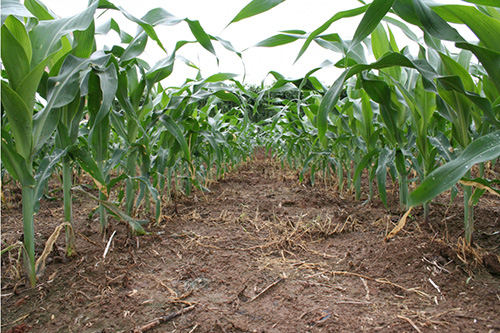Paraquat's key benefits
- Fast action allows earlier planting
- Rainfast
- Safe to crops
- Less labour and fuel use
- Reduces greenhouse gas emissions
- Prevents soil erosion
- Enhances soil structure and health
- More biodiversity
- More yield
- More profit
 Fast and effective weed control by paraquat means higher yields and more profit
Paraquat’s economic benefits to farmers and national trade balances have been quantified in a paper published in the journal Outlooks on Pest Management.
Fast and effective weed control by paraquat means higher yields and more profit
Paraquat’s economic benefits to farmers and national trade balances have been quantified in a paper published in the journal Outlooks on Pest Management.
Results collated from farm-scale field experiments and surveys in China, the Philippines and Vietnam present strong evidence that using paraquat contributes to significant increases in the annual incomes of smallholder farmers worth up to $1000/ha each year.
The main findings are summarised below.
Vietnam
In Vietnam, maize and tea are examples of important annual and perennial crops, respectively, where the use of paraquat is increasing yields and profitability, and improving the soil. Domestically, maize is in great demand for animal feed and tea is an important export commodity. Both crops are grown on hillsides where plowing and high rainfall can mean huge losses of soil by erosion.
Paraquat is particularly suited to help because of its use in no-till farming and its rainfastness. Controlling weeds with herbicides avoids the need to plow, which destabilises the soil making it prone to erosion.
Glyphosate is often used for the same purpose, but paraquat’s non-systemic mode of action means that roots are unaffected and remain to anchor the soil.
Using paraquat can save around 40% of labor requirements and increase yields by up to 1.1 tonnes/ha. Net profit was calculated as increasing by more than $350/ha over conventionally hand-weeded fields. The higher productivity of crops where paraquat had been used was estimated to amount an annual saving of up to 140,000 tonnes of maize imports.
Philippines
The population of the Philippines is growing amongst the fastest of all Asian countries. Already the country has less than one twentieth of a hectare of arable land per person (global average is one fifth of a hectare), and there is great pressure to grow more food. A survey of nearly 500 smallholder vegetable growers showed that paraquat users typically had their cost of land preparation and weeding much more than halved. Net cost savings reached over $200/ha and there were usually substantial increases in farmers’ incomes.
China
Included in the analysis were two other studies from China, which generated evidence of substantial benefits from paraquat use. One concerned a region in Sichuan province where rice is rotated with wheat and oilseed rape. Here, a long-term study established yield benefits averaging 8% from rice grown in a no-till system using paraquat. Vegetable growers in Guandong province have taken advantage of paraquat’s unsurpassed speed of action to bring forward planting by 10 days. Over several cropping cycles, this time saving accumulates to allow one or two extra crops to be grown each year. With an estimated 12 – 24 million paraquat users in China, the overall value of the extra cropping due to paraquat must, therefore, be worth several billion dollars per annum.
Summary
The scope of the analysis and the range of economic benefits received by small farmers from using paraquat are summarised in the following table.
|
Country surveyed |
Cropped area treated with paraquat included |
Net increase in smallholder annual income |
|---|---|---|
| Vietnam |
>100,000 ha (maize, tea) |
$80 - 350 |
| Philippines |
>300,000 ha (maize, sugarcane, vegetables) |
$21 - 224 |
| China |
>700,000 ha (rice/wheat/rape, vegetables) |
$440 - 1000 |
In addition, no-till cropping using paraquat can significantly reduce soil erosion and eliminate pollution caused by burning weeds pulled or cut by hand.
Read the full Outlooks on Pest Management paper here.
References
Shoham, J (2013). Quantifying the economic and environmental benefits of paraquat. Outlooks on Pest Management, 20, (2), 64-69

